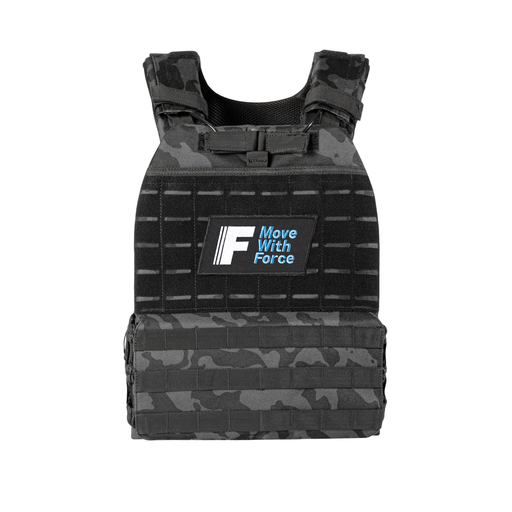
Can you combine running and walking with your rucking backpack?
Rucking is an enjoyable and versatile form of training that ticks so many boxes – cardio, strength, and endurance plus the mental health benefits of being outside. But what exactly is the best way to structure your rucking sessions? Let’s look at how to mix up walking and running with your weighted ruck pack to get the most fitness benefit out of every ruck.
5 benefits of steady walking for rucking
Walking with a weighted pack is the definition of rucking, and will naturally form the basis of every ruck you go on. Here are the benefits of keeping your rucks to walking-only activities.
- Low impact for joints – rucking is low-impact, making it suitable for all fitness levels, for injury rehab, or for a recovery-style cardio session.
- Endurance training – rucking at a brisk walking pace for longer distances is a great way to build CV endurance, muscular endurance, and stamina.
- Steady state cardio (LISS) – walking at a consistent pace with load maintains a steady heart rate, which is great for aerobic conditioning and endurance goals.
- Repeatable training – traditional walking-style rucking is something you could do every day (time permitting) as it is low-impact and demands very little recovery.
- Low-stress training - walking outdoors allows you to clear your mind, manage stress, and get some exercise away from the lights and music of a gym environment.
5 reasons to try running with your rucking backpack
While walking with a weighted pack is the traditional approach to rucking, incorporating running into your rucks has loads of fitness benefits.
- Training intensity – running with your ruckpack, or adding run intervals to your walking rucks, significantly increases the intensity of your sessions. This burns more calories, covers more ground in less time, and boost your cardio fitness.
- Speed and pace work – walking poses the risk of training a single pace. Adding running to your rucks helps you improve speed, anaerobic fitness, and trains your body to sustain higher speeds over shorter distances.
- Muscle activation - running uses different muscles to walking, and adding some running sessions into your rucking plan makes it even more of an all-round workout.
- Training variable – to progress in your training, you need to alter at least one training variable. Altering the “pace” variable means you don’t have to add more weight to your pack, or more time to your ruck.
- Time efficient - running means you can get more done, so you can either cover more ground in the same amount of time, or cover the same distance but be done sooner!
Should you add running to your rucking routine?
The benefits to running with your ruckpack are clear, but the question remains: should you? We think it’s worth varying the pace of your rucks, whether that means faster walks or some running intervals. Of course, if you’re training for a long walking endurance event (like the Fan Dance, for example), you’ll want to focus the majority of your training on walking endurance. But adding some run intervals will have a positive impact on your endurance, baseline pace, and overall fitness.
If you ruck for cardio or simply because you enjoy being outside, why not add in some running sections to your rucks? You’ll get fitter, boost your endurance, raise your walking pace, and avoid plateaus.
Workout ideas that combine walking and running in rucking training
The beauty of rucking lies in its versatility, and you can tailor your training to suit your goals. Here are three great ways to add some running to your rucking routine.
Walk/run rucking intervals
Alternate periods of walking and running during your ruck workout to vary the intensity. Use a similar approach to fartlek or intervals in running. Since you won’t be on a running track, go by time rather than distance. Try 5 minutes walking, 2 minutes running and repeat as often as you ruck allows.
Interval ladders
Use the ladder approach to intervals by increasing then decreasing the length of the running intervals. Walk for 5 minutes, run for 1 minute. Add one minute to each running interval until you reach 5 minutes. Then come back down the ladder to a 1 minute run.
Speed work
You could vary the pace of your runs rather than the distance. Walk for 5 minutes, run for 1 minute and repeat this 8-10 times. Increase the pace of the run every time.
Simply run
You could also just run for an entire ruck, rather than using an interval training approach. Warm up by walking, then run at a pace you can maintain for 15+ minutes. Be sure to finish with walking to cool down properly.
Is it OK to run with a rucking backpack?
A well-fitting rucking backpack is safe to run with. Make sure the straps are snug so the pack fits close to your body and won’t shift too much. Start with a light weight (you can always add more). Ruckpacks that use thin weight plates – like our Force Fitness ruckpacks and rucking plate carriers – are the ideal size and fit for running.

















